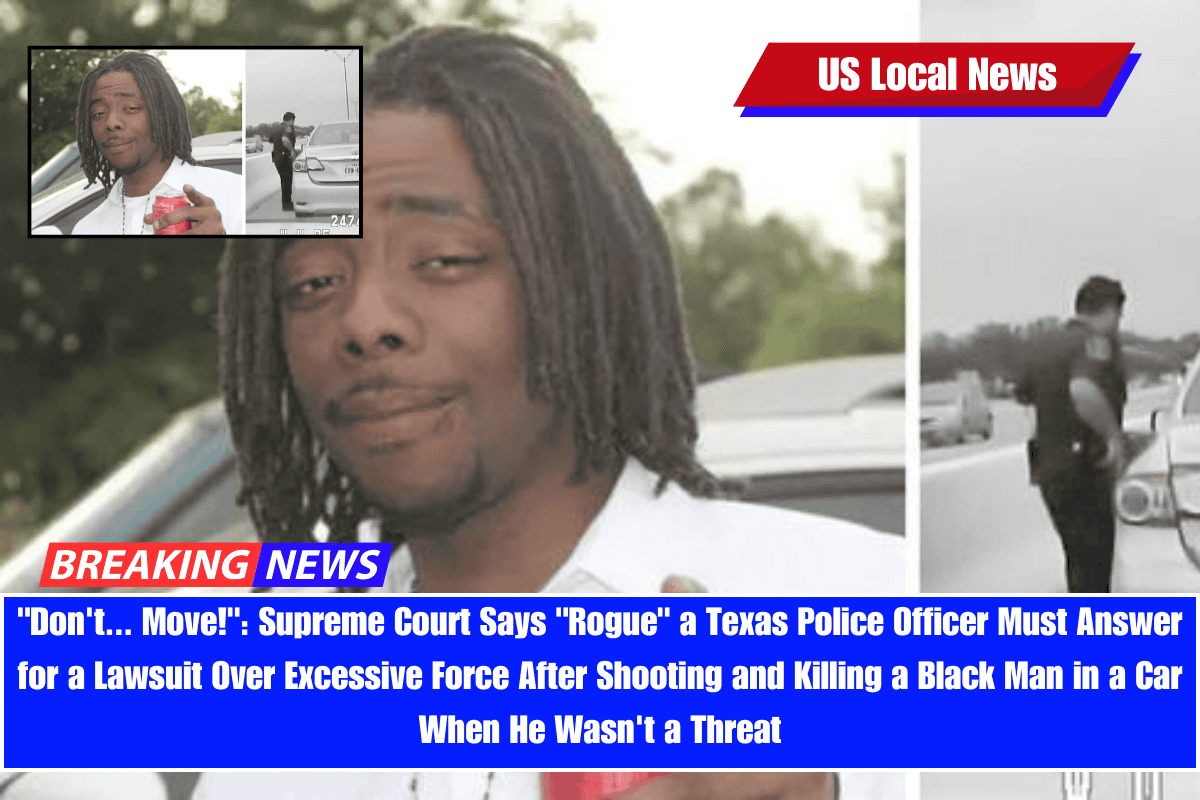The U.S. Supreme Court has overturned lower court rulings and revived the lawsuit filed by the family of Ashtian Barnes, a 24-year-old Black man fatally shot by Harris County Constable Roberto Felix Jr. during a 2016 traffic stop in Houston, Texas. The Court ruled that the lower courts erred by focusing only on the final seconds before the shooting instead of considering the totality of circumstances leading up to the incident.
Background of the Case
Barnes was stopped for unpaid toll violations totaling less than $10. After a tense encounter, Constable Felix climbed onto the car’s doorsill as Barnes attempted to drive away. Felix fired two shots, killing Barnes within seconds.
Barnes’ family sued Felix for excessive use of force, claiming Barnes was not an immediate threat when shot. The lawsuit was dismissed by lower courts citing a narrow “moment-of-threat” rule, which looks only at the brief moment before force is used.
What Did the Supreme Court Say?
In a unanimous decision authored by Justice Elena Kagan, the Supreme Court criticized the lower courts for ignoring important events that happened before the final seconds of the shooting.
“To assess whether an officer acted reasonably,” Justice Kagan wrote, “a court must consider all relevant circumstances, including facts leading up to the climactic moment.”
She added that by focusing on only two seconds before the shooting, the lower courts excluded crucial actions that may have created the danger justifying deadly force.
Why Is This Important?
The ruling challenges the “moment-of-threat” rule used by the Fifth Circuit Court of Appeals, which covers Texas, Louisiana, and Mississippi. This rule narrows judicial review and often makes it difficult for victims of police shootings to proceed with lawsuits.
The Supreme Court’s decision demands that courts use a broader “totality of circumstances” approach, like most other federal circuits, allowing a fuller examination of police conduct.
Criticism of the Fifth Circuit
The Fifth Circuit, known for its conservative stance, has faced criticism for several controversial rulings. It has been called a “rogue” circuit accused of undermining democratic principles and legal norms.
Additional Case Details
- The shooting happened on April 28, 2016, when Felix stopped Barnes over unpaid tolls.
- Felix claimed to smell marijuana, but none was found.
- Video shows Felix yelling at Barnes not to move, firing two shots while hanging onto the car.
- Barnes was on his way to pick up his girlfriend’s daughter from daycare.
- Barnes’ family alleges the police delayed releasing video footage and may have covered up details.
- A grand jury declined to indict Felix in 2016.
What Happens Next?
The case has been sent back to the Fifth Circuit with instructions to reconsider the lawsuit using the totality of circumstances standard. This ruling may pave the way for more police use-of-force lawsuits to be heard in full context.











Leave a Reply